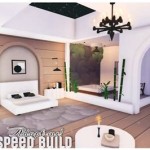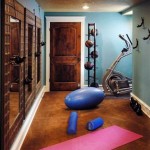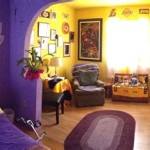Decorating Ideas for Paneled Walls
Paneled walls, whether original to a home or a more recent addition, offer distinctive character and architectural interest. However, decorating these walls can present unique challenges. The right approach can transform paneled walls into a stunning focal point, enhancing the overall aesthetic of the room. This article explores various decorating strategies that leverage the inherent beauty of paneled walls while addressing potential design complexities.
Embrace the Paneling
One of the most effective ways to decorate paneled walls is to emphasize their unique texture and pattern. A fresh coat of paint in a complementary color can dramatically enhance the architectural details. Light, neutral colors often work well to brighten the space and make the room feel larger. Alternatively, bolder, more saturated colors can create a dramatic and sophisticated atmosphere. The choice of sheen is also critical; a satin or eggshell finish will highlight the paneling's texture while minimizing imperfections. High-gloss paint can create a more modern and polished look, while a matte finish can provide a more subdued and traditional feel.
Consider using contrasting colors for the panels and the stiles (the vertical dividers) and rails (the horizontal dividers). This technique can further accentuate the architectural details of the paneling, adding depth and visual interest. For instance, a darker color on the stiles and rails can create a striking contrast against a lighter wall color, drawing attention to the paneling's geometry.
Strategic Artwork Placement
Hanging artwork on paneled walls requires careful consideration. The size and placement of the artwork should complement the paneling, not compete with it. Larger pieces can be centered within a panel, creating a focal point. Smaller pieces can be grouped together, creating a gallery wall effect. Avoid overcrowding the walls, as this can make the space feel cluttered and detract from the paneling itself.
When hanging artwork, consider the scale and proportion of the paneling. For example, a large artwork might be overwhelming on a small panel, while a small artwork might get lost on a large panel. Using painter's tape to outline potential artwork placements can help visualize the final result before making any holes in the wall. This technique allows for experimentation with different arrangements and ensures that the artwork harmonizes with the paneling.
Incorporating Texture and Pattern
While the paneling itself adds texture to the walls, incorporating additional textures and patterns can create a more layered and dynamic space. Textiles such as curtains, rugs, and throw pillows can soften the hard lines of the paneling and introduce warmth and comfort. Consider using patterns that complement the paneling's style; for example, geometric patterns can pair well with more modern paneling, while floral or damask patterns can complement traditional paneling.
Adding texture can involve more than just textiles. Consider incorporating natural elements such as woven baskets, wooden bowls, or metal sculptures to create visual interest. These elements can also introduce warmth and personality to the space. Mirrors are another excellent way to add dimension and reflect light, making the room feel brighter and more spacious. Strategically placed mirrors can also highlight the paneling's unique features.
Lighting Considerations
Lighting plays a crucial role in enhancing the beauty of paneled walls. Wall sconces can be strategically placed to highlight the texture and details of the paneling. Uplighting can create a dramatic effect, washing the walls in a warm glow. Avoid harsh overhead lighting, which can cast shadows and diminish the paneling's visual appeal.
The type of lighting used also influences the overall ambiance. Warm, soft lighting creates a cozy and inviting atmosphere, while cooler, brighter lighting can make the space feel more energetic and modern. Dimmer switches can offer versatility, allowing adjustments to the lighting levels to suit different moods and occasions. Layering different types of lighting, such as ambient, task, and accent lighting, can contribute to a well-balanced and aesthetically pleasing space.
Accessorizing with Purpose
Accessories can add personality and style to a room with paneled walls. However, it's important to avoid cluttering the space. Select a few carefully curated items that complement the paneling and overall design scheme. Plants, books, and decorative objects can add visual interest without overwhelming the space.
Shelving can offer a practical and stylish way to display accessories and books while working with the paneling. Consider installing shelves within the panels themselves, creating a built-in look. Alternatively, floating shelves can provide a more modern aesthetic. Be mindful of the shelf depth and the items displayed to avoid a cluttered appearance. The shelves themselves should complement the paneling's style and finish for a cohesive look.

How To Make A Dark Paneled Room Look Fresh Light Wood Paneling Living Makeover Rustic

How To Make Wood Paneling Look Modern Without Painting It Five Ways

25 Best Decorative Wall Paneling Ideas From Designers In 2025
:max_bytes(150000):strip_icc()/2-56a52bfc3df78cf77286aa78.jpg?strip=all)
8 Super Cool Rooms With Wood Paneling
:max_bytes(150000):strip_icc()/1-56a52bfc5f9b58b7d0db3ce8.jpg?strip=all)
8 Super Cool Rooms With Wood Paneling

20 Decorative Wall Paneling Ideas For Your Room Foyr

How To Make Wood Paneling Look Modern Without Painting It Five Ways

Wall Paneling Ideas 18 Stylish Examples

Wall Paneling Ideas The Home Depot

20 Wall Paneling Ideas Decorative Panels
Related Posts







